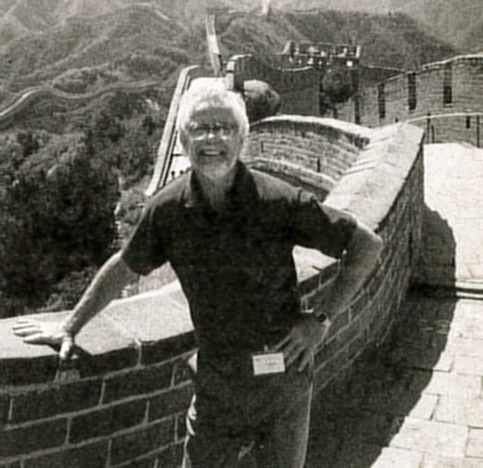


Obituary
Edward Norman (Ted) Maslen (1935-1997)

Crystallographers the world over will be saddened to learn of the death of Ted Maslen, Head of Physics at the U. of Western Australia who collapsed and died during a long distance race on a hot Sunday morning, February 2 1997. Ted was born in the outback gold-mining town of Kalgoorlie in Western Australia, and educated at St Patrick's College, Geraldton, a coastal fishing town. He was awarded a prestigious General Exhibition and at the U. of Western Australia in Perth where he commenced a long and productive career in Physics. He was an outstanding student, a competitive athlete, and President of the Guild of Undergraduates at UWA in 1957. At the time, Western Australia had no medical school, and he led a student fund-raising appeal for one, in the midst of which he contracted tetanus after spiking himself at an athletics meet. This illness made headlines because the traffic past Royal Perth Hospital was diverted to keep his hospital ward silent. This publicity gave the fund-raising campaign a boost and there is a picture of him sitting up in bed to present a cheque for the then substantial sum of ten thousand pounds to the campaign manager.
A Rhodes scholarship took him to St John's College, Oxford in 1957-59 where he was supervised by Dorothy Hodgkin for a DPhil, working on structural aspects of penicillin and cephalosporin. While there, he met Sheila Robinson whom he married and with whom he raised a family of eight children. He returned to UWA in 1960, as lecturer in physics, becoming senior lecturer in 1963 and reader in 1968, attracting an effective group of research students. His experimental interests focused on extracting the utmost out of X-ray and neutron diffraction data, for families of related crystal structures. Later he progressed to the detailed study of the electron distributions themselves, a field in which he was a pioneer.
Ted was influential in introducing the first electronic computer to UWA, followed by a four-circle diffractometer in the mid-60's. In 1971 he established the Crystallography Centre at the University, which he directed until he became head of physics in 1993. He served on many IUCr committees, working parties and commissions. He was a member of the IUCr Executive Committee from 1984 to 1990, Organizing Chairman of the 1987 IUCr Congress in Perth, and Director of the IUCr Electronic Publishing Committee until last year. He was elected as a Fellow to the Australian Academy of Science. In recent years his interests have centered on the use of microcrystals and synchrotron radiation for precise studies. Through collaboration with Japanese scientists at the Photon Factory at Tsukuba, he exploited the experimental possibilities of the latest technology to their utmost.
Ted's political astuteness paralleled his scientific prowess. Ted voiced his honest and forthright opinions on matters scientific and ethical, in venues which ranged from crystallographic conferences to local campus and municipal council meetings (where he served for 22 years). He maintained the daily regime of cycling to work (some 10 miles) and running each evening for an hour (in bare feet!). Characteristically, he expected of his staff members and students (and often dismayed visitors to the lab!) the same levels of productivity, effort and fitness that he demanded of himself.
Ted will be greatly missed at national and international crystallographic conferences. His many friends throughout the academic, crystallographic and physics communities share the deep loss felt by Sheila and their children.
Syd Hall and Allan White

